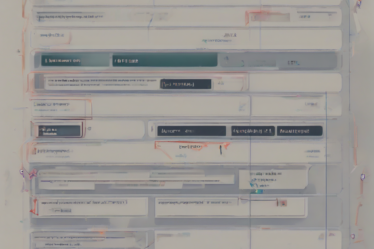
What Does Filing for Bankruptcy Do? A Comprehensive Guide
Facing overwhelming debt can feel incredibly isolating and daunting. You might feel like you’re drowning in bills, with no end in sight. In these circumstances, bankruptcy might seem like a last resort, but it can be a powerful tool to regain control of your financial life.
This comprehensive guide delves into the complexities of bankruptcy, answering crucial questions and helping you understand the potential impact on your finances and life.
Understanding Bankruptcy: A Lifeline or a Last Resort?
Bankruptcy is a legal process that allows individuals and businesses to be relieved of some or all of their debts. It’s a complex system with different types of bankruptcy designed for specific situations. The two most common forms are Chapter 7 and Chapter 13, each offering distinct paths to debt relief.
Chapter 7: Liquidation Bankruptcy
- Key Feature: This chapter involves selling off your non-exempt assets (like a car, house, or valuable possessions) to repay creditors. The proceeds from the sale are distributed among your creditors according to a specific order.
- Who’s It For: Chapter 7 is suitable for individuals and businesses with limited income and assets. It allows them to receive a fresh start by wiping out a significant portion of their debts.
- Impact on Debts: Most debts, including credit card debt, medical bills, and personal loans, can be discharged in Chapter 7 bankruptcy. However, certain debts, like student loans, alimony, and child support payments, are generally not dischargeable.
- Pros:
- Offers a relatively quick resolution to overwhelming debt.
- Results in the discharge of most unsecured debts.
- Provides a fresh start for individuals with limited resources.
- Cons:
- Requires the sale of non-exempt assets to pay creditors.
- Can have a negative impact on credit score for several years.
- May lead to the loss of certain assets.
Chapter 13: Reorganization Bankruptcy
- Key Feature: In Chapter 13, individuals create a repayment plan lasting 3-5 years, where they make monthly payments to a court-appointed trustee, who then distributes the funds to creditors. The plan is designed to help individuals catch up on missed payments and gradually repay their debts.
- Who’s It For: Chapter 13 is typically better suited for individuals with regular income and substantial debt, enabling them to keep their assets while restructuring their debts.
- Impact on Debts: Depending on the plan, Chapter 13 can lead to the reduction or elimination of debt. It also allows for a restructuring of mortgage and car loan payments, making them more manageable.
- Pros:
- Allows individuals to keep their assets, including their home and car.
- Provides a structured path to debt repayment.
- Potentially leads to lower interest rates and reduced debt.
- Cons:
- Requires making consistent monthly payments for several years.
- Can be a more complex and lengthy process compared to Chapter 7.
- May involve stricter financial restrictions during the repayment period.
The Bankruptcy Process: A Step-by-Step Overview
The bankruptcy process involves a series of steps and procedures that require careful navigation. Here’s a simplified overview of the steps involved:
- Credit Counseling: Before filing, individuals are required to receive credit counseling from an approved agency. This session helps assess financial situations and explore alternatives to bankruptcy.
- Filing: The next step involves filing bankruptcy petitions with the appropriate court. This includes providing detailed information about income, expenses, assets, and debts.
- Automatic Stay: Once a bankruptcy petition is filed, an automatic stay comes into effect, preventing creditors from pursuing collection activities. This provides some breathing room for individuals to focus on resolving their financial situation.
- Meeting of Creditors: A meeting with creditors is scheduled where they can ask questions about your finances and the proposed plan. This is an opportunity to understand the process and voice any concerns.
- Debt Discharge: If approved, a court order is issued discharging eligible debts. This effectively releases you from responsibility for those debts.
- Confirmation of Plan: In Chapter 13, the repayment plan must be confirmed by the court. This involves a thorough examination of your finances and the feasibility of the proposed payments.
The Impact of Bankruptcy on Your Life
Filing for bankruptcy can have far-reaching implications for your life, both financial and non-financial. Understanding these potential impacts is crucial before making any decisions.
Financial Impacts
- Debt Relief: The primary benefit of bankruptcy is the ability to discharge most of your debts. This can significantly alleviate financial burdens and provide a fresh start.
- Credit Score: Bankruptcy filing has a significant negative impact on your credit score. It can take several years for your score to recover to pre-bankruptcy levels.
- Limited Access to Credit: After bankruptcy, securing loans and credit cards might become more challenging, as lenders may be hesitant to provide financing.
- Loss of Assets: Chapter 7 bankruptcy can involve the loss of non-exempt assets to satisfy creditors. This could include vehicles, homes, or valuable possessions.
- Tax Implications: Depending on the circumstances, some debts discharged in bankruptcy might be considered taxable income by the IRS.
Non-Financial Impacts
- Stigma: Bankruptcy carries a social stigma in many societies, leading to potential embarrassment or negative judgment from family, friends, and employers.
- Employment Opportunities: Some employers might conduct background checks, and a bankruptcy filing could potentially impact job prospects, particularly in certain industries.
- Emotional Impact: Filing for bankruptcy can be emotionally draining, as it involves acknowledging financial struggles and facing the potential loss of assets.
- Legal Ramifications: The bankruptcy process itself can be legally complex, requiring careful navigation of legal procedures and deadlines.
Alternatives to Bankruptcy: Exploring Other Options
While bankruptcy might seem like the only solution, it’s essential to explore alternative options before making a decision. These alternatives can provide debt relief without the significant drawbacks associated with bankruptcy.
- Debt Consolidation: Combining multiple debts into a single loan with lower interest rates can make repayments more manageable.
- Debt Management Plans: Working with a credit counseling agency to create a budget and negotiate with creditors for lower payments and interest rates.
- Negotiation with Creditors: Reaching out to creditors directly to discuss payment options, potential hardship programs, or debt forgiveness possibilities.
- Debt Settlement: Negotiating with creditors to settle debts for less than the full amount owed.
- Government Assistance Programs: Exploring federal or state programs that offer financial assistance, such as food stamps, housing subsidies, or medical assistance.
When Bankruptcy Might Be the Right Choice
While bankruptcy should not be considered lightly, it can be a viable solution in specific circumstances. It’s essential to consider these factors when deciding if bankruptcy is right for you:
- Overwhelming Debt: If you are struggling to keep up with minimum payments on your debts, and other debt relief options have failed, bankruptcy might be a necessary step to alleviate financial burdens.
- Threatened Legal Action: If creditors are pursuing legal action, such as wage garnishment or asset seizures, bankruptcy can provide immediate protection from further collection efforts.
- Limited Income and Assets: If you have limited income and assets, Chapter 7 bankruptcy might be a more appropriate option, allowing you to discharge most of your debts and receive a fresh start.
- Medical Debt: Bankruptcy can be particularly beneficial for individuals burdened by overwhelming medical debt, providing an opportunity to start over financially.
Navigating the Bankruptcy Journey: Getting Professional Help
Filing for bankruptcy is a complex process, with potential long-term implications for your financial life. It’s crucial to seek professional guidance from experienced legal and financial experts.
- Bankruptcy Attorney: A bankruptcy attorney can help navigate the legal complexities of the process, ensure proper filing procedures, and advocate for your rights throughout the proceedings.
- Credit Counseling Agency: Credit counselors can assess your financial situation, provide budget guidance, and explore alternative debt relief options before considering bankruptcy.
- Financial Advisor: A financial advisor can help you develop a post-bankruptcy financial plan, address credit rebuilding strategies, and create a sustainable financial future.
Seeking professional guidance is critical to making informed decisions and navigating the bankruptcy process effectively.
Conclusion: A Path to Financial Recovery
Bankruptcy is a significant step with potential long-term consequences. While it should not be considered lightly, it can be a powerful tool for individuals and businesses facing overwhelming debt.
By understanding the different types of bankruptcy, the process involved, and its potential impacts, you can make informed decisions about whether it’s the right path for your circumstances.
Remember, seeking professional guidance from legal and financial experts can help you navigate this complex journey effectively and work towards a brighter financial future.


